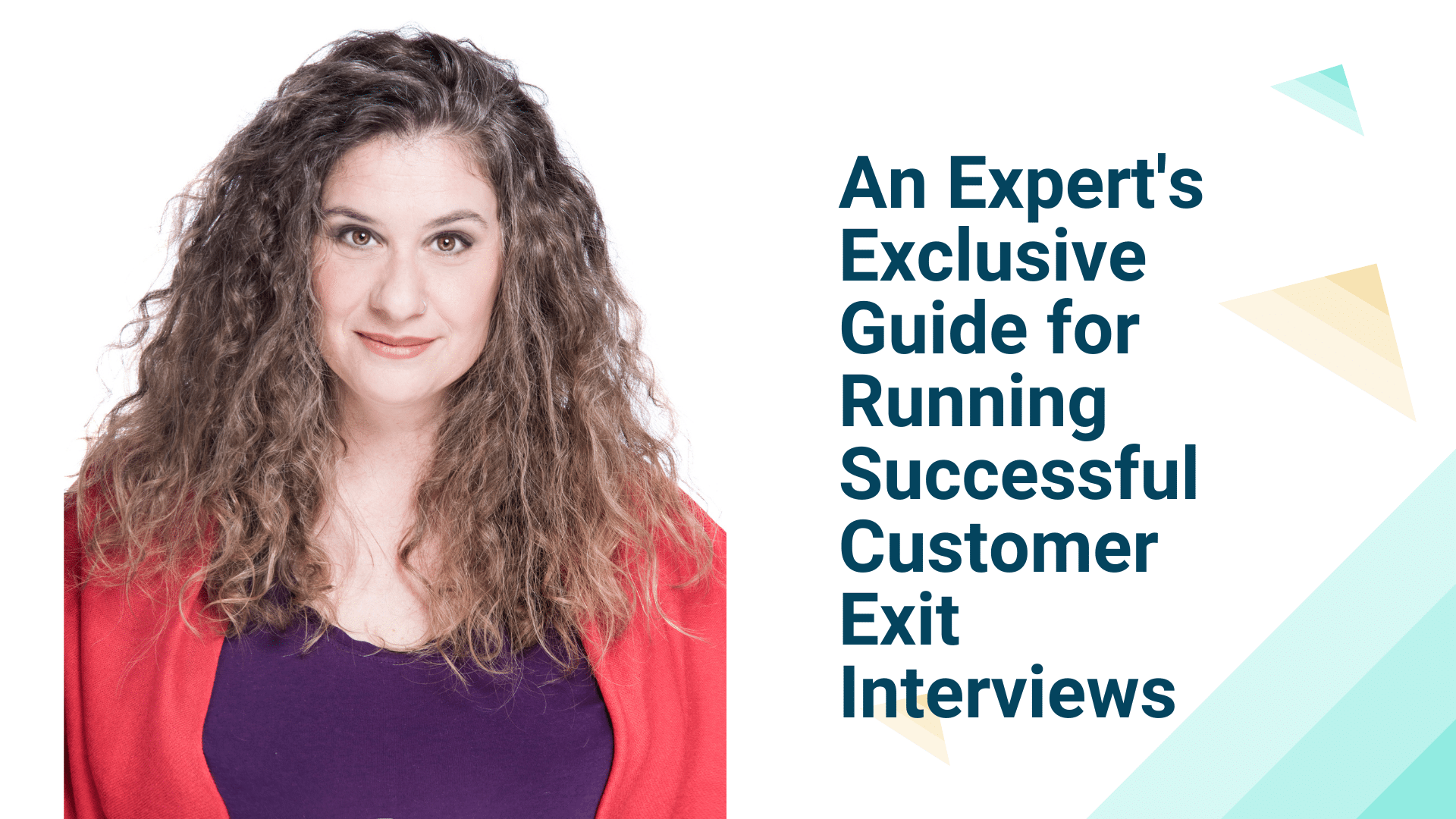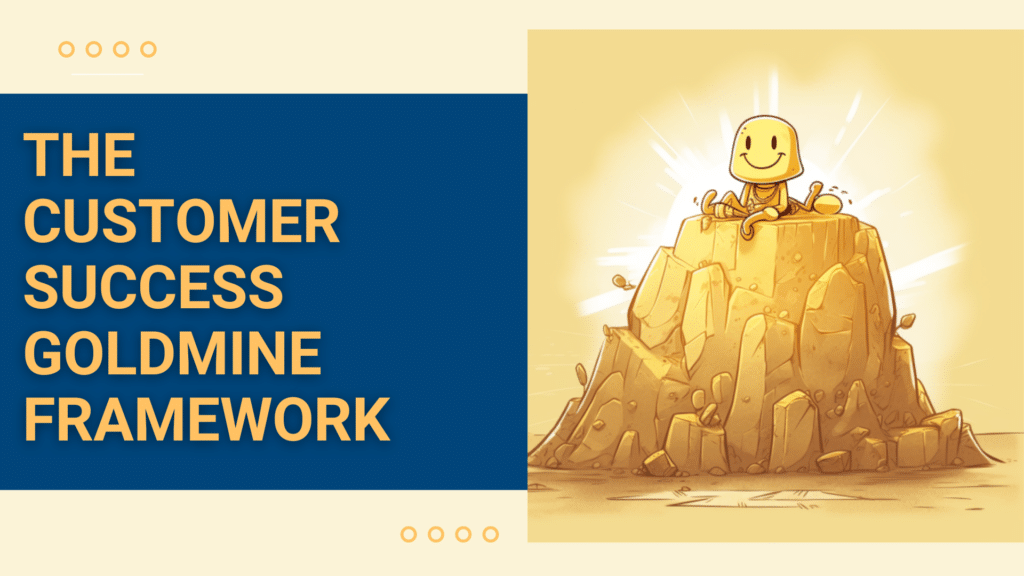Watch this blog presented as a webinar.
It’s never easy learning that a customer is leaving. But as they prepare to leave, you have a rare opportunity to find out why. Exit interviews, when properly structured and executed, provide a unique chance to dig deep and discover valuable information which can lead to actionable churn-preventing insights.
In this article, we’ll cover:
- How to conduct exit interviews like a pro
- Expert ways to dig deep and extract the most valuable information from your exiting customers
- How to take that valuable data and use it to stop other customers from leaving
What is the purpose of customer exit interviews?
The purpose of the exit interview is to gather valuable customer feedback to better understand why your customers have chosen to leave, and to help you prevent future churn.
This valuable data can be used cross-functionally to reduce churn and increase revenues:
PRODUCT
Your Product team will be able to build the feature requirements most tied to revenue and churn.
MARKETING
Your Marketing team will be able to use the feedback to create stronger messaging and attract better-fitting customers.
CUSTOMER SUCCESS & SALES
Your Customer Success and Sales will be able to set better expectations in the sales process and across the customer journey.
By having a systematic exit interview strategy, you’ll capture critical insights to make faster revenue-driving changes.
What are the advantages of customer exit interviews?
The most obvious advantage of customer exit interviews is that it is a dialogue. Every other form of customer feedback like surveys or observational data (think usage data) is a monologue — you can’t ask customers for further details in the moment.
Customer feedback data falls into 3 categories:

General Data is broad information that is good at showing trends over a period of time. Given its power to show trends over time, one of the advantages of General Data is that it can be used for benchmarking and trend analysis.
General Data examples include CSAT, NPS, CES and cancellation surveys. Customers choose their answers from pre-populated lists.
Medium Data is in the middle — between very broad General Data and very specific Deep Data. Medium Data takes longer to answer and gives greater insights into what your customers are thinking.
The greatest advantage of Medium Data over General Data is that your customer is able to answer the open-ended questions in their own words.
Unlike General Data which is numerical and can be easily plotted on graphs, Medium Data is all about different themes in your customer’s responses. You can track the change in themes over time to see how your customer’s needs, desires, and wants are changing. This is very useful information for when you’re making strategic decisions.
Any type of survey where customers are able to write their own responses is considered to be Medium Data. You may create surveys to gather feedback on new processes, or services, or for giving clarity on a specific issue.
Deep Data is by far the most valuable and useful customer feedback data for decision-makers. Deep data reduces the risk of making incorrect or poor decisions. Because they are monologues or one-way sharing of information, General and Medium Data require decision-makers to guess, assume or presume why the data is trending the way it is. Deep Data focuses on your customer’s thoughts, feelings, wants, and desires. Deep Data reduces the need to guess, assume or presume. It brings you closer to your customer’s truth. Deep Data is the true Voice of the Customer.
What’s involved in customer exit interviews?
All customer exit interviews follow a 3 Step Interview Process.
- Pre-Interview
- The Interview
- Post-Interview
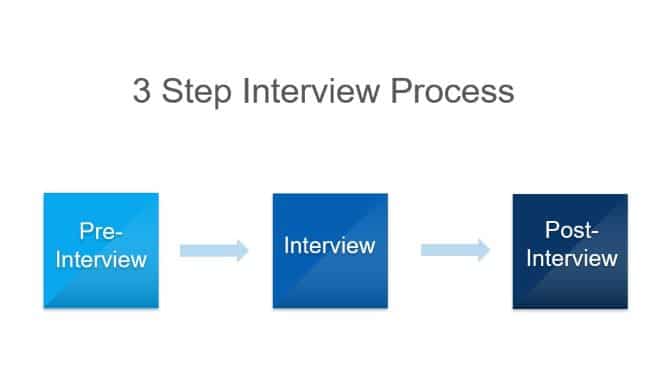
Step 1: Pre-Interview

I know you’re excited to learn how to conduct customer exit interviews but before you start booking those interviews, you need to take the time and make sure you’ve built the right processes so your customer exit interviews are properly structured to avoid any novice mistakes.
Within the Pre-Interview step, there are the 5Ps (also known as the Strategic Interview Plan)
5Ps (Strategic Interview Plan)
- Purpose of the interviews
- Plan for the people and data
- Pre-write the questions
- Populate with the right people (if possible)
- Practice
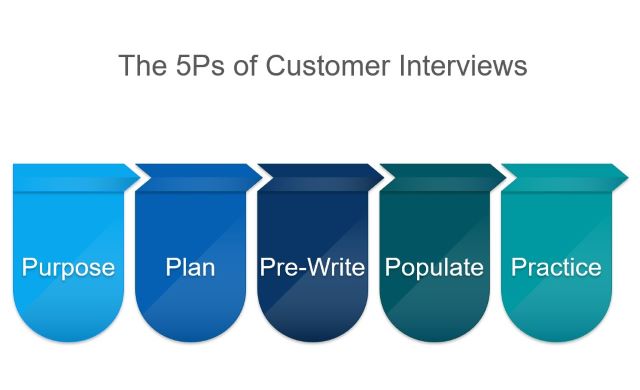
#1. Purpose of the interviews
This one seems obvious, but the purpose of the interviews may differ according to what you’re looking to achieve.
For example, you might only be interested in interviewing decision-makers when they churn.
Or you might be interested in learning the top 3 reasons why certain product users churn.
Or maybe you want to understand why accounts of a certain size are leaving.
As you can see, the reasons for conducting exit interviews are different.
By selecting 1 purpose for conducting the interview, everything you do around the exit interviews will be aligned with this 1 purpose.
Having 1 purpose means:
Clarity—If something isn’t clearly aligned with the 1 purpose, it isn’t included.
Comparison—at the end of the interviews, you can compare results across every single customer that’s been interviewed.
This is important because you want to make sure what you’re hearing from your customers isn’t by accident.
Completeness—the one goal helps ensure the entire process of creating, executing, and acting on the exit interviews is completed.
#2A. Plan for the people and the data
This is the stage where your exit interview strategy succeeds or fails.
Careful planning during this stage will help the rest of your customer exit interview program run smoothly.
Let’s start with Planning for the People.
Who should run the customer exit interviews?
Interviewing is a skill. Just like with sales, you have ok salespeople, good salespeople, and then you have your all-star salespeople. What differentiates the ok salespeople and the all-star salespeople is their skill. Interviewing is a skill that takes years to perfect. But in a few months by following this guide, your interviewers can become good at interviewing your churned customers.
You’ll want 2 dedicated team members to undertake ALL the customer exit interviews.
The reason to dedicate team 2 members is
- it builds their interviewing skills
- they’ll be better able to identify emerging information (new and perhaps previously hidden reasons why customers are leaving)
- they won’t be associated with the customer they’re interviewing
- if one of them is unavailable or changes jobs, you still have a trained interviewer available
You might be wondering about the third bullet – they won’t be associated with the customer they’re interviewing. This might seem counterintuitive given the CSM for the account already has an established relationship.
The reason why you want an interviewer who isn’t associated with the account is that the customer can feel free to be more honest about their feelings without worrying they might hurt the feelings of the CSM that they know. Many people assume that the best person to run the exit interview is the CSM of the customer. This is wrong. With the right environment and with a skilled interviewer, customers can feel more comfortable in expressing their true thoughts, feelings, wants, and desires.
What’s the best customer exit interview incentive?
The customer is leaving. The exit interview is your last chance to speak with them before they go. The customer has generously offered to spend their time with you. Time that they will never get back.
REMEMBER!
The customer truly has no obligation to participate in these customer exit interviews.
The customer is helping you without obvious benefit to them.
This is your opportunity to make a good last impression – even if your churning customer is very unhappy.
The appreciation/thank you gift (incentive) should be a choice of 2 different options:
1. to donate a set dollar amount in their name to the charity of their choice
2. a set dollar amount gift card
Regardless of which option you choose, you will need some budget to cover the cost of these options. Exiting customers are doing you a favour by taking their time to speak with you about why they’re leaving. If you don’t provide an incentive, your participation rates will be very low.
You do have the choice of how much the incentives will cost.
In our agency, we suggest a range for the appreciation/thank you gift (incentive) depending on the customer being interviewed. We recommend a range of $25 for end-users up to $350 for executives, upper management, and C-Suite customers. Anything less than this doesn’t show the value of their time. Anything more than this and it may appear as if you’re trying to win them back.
#2B. Planning for the Data
Just as you need to plan the people part of your customer exit interview strategy, you’ll also need to plan the data part.
The most common mistake is that companies overlook this step. We’re all eager to start talking to customers but the real driver of reducing churn is what you do with the data you’ve gathered.
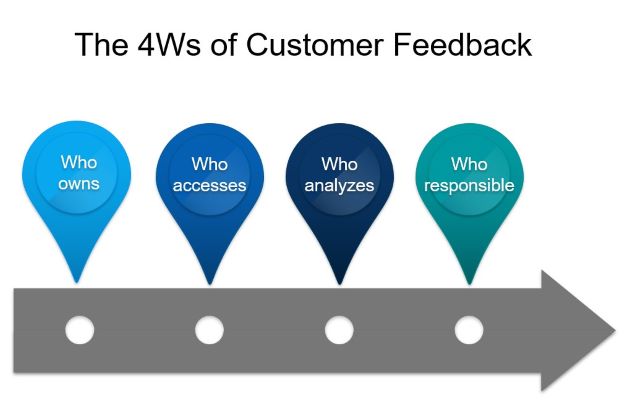
There are 4 W’s for your customer exit interview data:
1. Who owns the data?
Is that you?
Someone on your team?
2. Who can access the data?
Within your department?
Outside of your department (like product, sales, marketing)?
3. Who will analyze the data?
Who will clean the data?
Who will analyze the data?
4. Who is responsible for actionable items?
Who is responsible for determining actionable items?
Who is responsible for executing on those actionable items?
#3. Pre-write the questions
Now the fun stuff! This is where you get to determine the types of questions you want to be answered.
As with everything you’re doing with the customer exit interviews, the questions you create have to reflect the purpose that you determined at the beginning in the “Purpose of the Interviews”.
If this is your first-time running customer exit interviews, for simplicity’s sake, do not involve other teams in the process just yet. You’ll want to have a full trial run of the customer exit interview process before bringing in other teams.
If you currently run customer exit interviews, feel free to gather potential questions from other teams. Just ensure those questions align with the goal you determined at the beginning in the “Purpose of the Interviews”.
Customer Exit Interview Questions Examples
- Exit interviews should be between 20-30 minutes long.
- Use 2 or 3 themes only.
- Use 5- 10 questions for each theme.
Here’s an example. You determined the purpose of your customer exit interviews was to understand why customers of a certain size are leaving.
Your themes might be:
- Reasons for leaving — why they are leaving, how they felt prior to leaving, how they came to the decision to leave
- Product — what they hoped to achieve with the product, what they liked, what they didn’t like
- Communications — was there too much communication, not enough communication, what did they like about the communication, what didn’t they like
As you can see, I have identified 3 themes and 10 questions.
That is plenty for a 30-minute interview.
#4. Populate with the right people (as much as possible)
Populating with the right people is critical for the success of your exit interview strategy. Depending on the purpose of the interviews you decided way back at the beginning, who you invite will differ. If your purpose is to get a better understanding of all customers in the account, then you’ll be reaching out to everyone. However, if you’re just wanting to speak with decision-makers, you’ll be reaching out only to them. This matters because you want to have enough customers participate so you can start seeing patterns. You will start seeing patterns in your customer’s responses when you get 10 or more interviews. When you’re first starting out, assume that 5-10% of people will choose to participate (for self-success and low touch CS models) and 25-30% (high touch CS models), unless you have a very good customer engagement strategy.
There are 2 ways to recruit customers into your exit interviews:
- Via cancellation survey
- Directly ask your churning customers to participate
Recruiting customers for exit interviews via survey
If you have a customer base that is self-success (low touch/tech touch), the best way to recruit customers is through a cancellation survey.
The cancellation survey will provide you with some details about their reasons for canceling. At the end of the survey, you ask if they’d be willing to participate in a call to better understand those reasons (feel free to mention the length of the call and the appreciation/thank you gift dollar amount).
Recruiting customers for exit interviews by directly asking
If your customer base is medium or high touch, asking for direct participation is the best course to take. You can do this by email or on a call or even at their final QBR/EBR.
As is the case with most of us, once we’ve decided to leave (a place, a job, a relationship), our minds start focusing on the future and we want to move forward and leave the past behind.
This is the biggest obstacle you’re facing in getting customers to participate in your exit interviews is that in their minds, your customers have already moved on.
That’s why it’s so important to ask for these interviews as soon as you find out the customer is leaving.
Each minute, hour, day or week that slips by means your customers are less likely to participate.
#5. Practice
I touched on this earlier – interviewing is a skill.
Before your interviewers start interviewing customers, they should practice mock interviews with the team. Use the questions you’ve created to see how they flow and if they need to be changed.
Assign different scenarios to your mock customers so that some are leaving with a positive experience of your company and others are leaving with a negative experience.
Encourage your mock customers to express different emotions like joy, anger, disappointment and ambivalence.
The interviewers will experience this range of emotions when they interview real customers. It’s immensely helpful for the interviewers to learn how to handle these emotions in practice scenarios where they can safely make mistakes and learn new ways of handling the interview process.
Step 2: The Interview

Customer exit interviews are fantastic! This is where you can get deep knowledge that can inform action and help lead to stronger decisions.
I’m not going to spend much time here but I’ll take you through the basic structure of an interview.
- Intro
This is where trust is built. If it’s done well, the customer should feel comfortable that they can share their true responses to your questions. They will open up and share those things that typically are locked inside. This is the gold you’re searching for. - Ask questions
This is pretty straightforward. You’ll want to be aware of how you ask and when to probe for more details. - Close
This is where you’ll close the interview and offer the appreciation/thank you gift.
**REMEMBER TO RECORD ALL YOUR EXIT INTERVIEWS**
You will need them recorded so you can transcribe and analyze them later on.
Step 3: Post-Interview

With the interviews completed, now it’s time to make sense of the data and start tying the data to your team and company objectives and metrics.
I suggest collecting all your interviews into one place that those teams and people who you identified earlier can easily access them.
Depending on the size of your company, you could use a Voice Of the Customer program, your CRM, or even a Google Drive spreadsheet file.
Post-Interview Step 1
Broadly Categorize According to Your Themes
This is a quick and easy step. Look through the transcripts and identify the areas in the interview where you asked questions related to the 2 or 3 themes you identified when you were pre-writing the interview questions.
For example, if your goal is to understand why accounts of a certain size are leaving, your themes might be:
- Reasons for leaving — why they are leaving, how they felt prior to leaving, how they came to the decision to leave
- Product — what they hoped to achieve with the product, what they liked, what they didn’t like
- Communications — was there too much communication, not enough communication, what did they like about the communication, what didn’t they like
You’ll categorize your interviews with these themes: Reasons for Leaving, Product and Communications.
It’ll look something like this:

Post-Interview Step #2
Look for Positive and Negative Sentiment
The quickest way to determine actionable insights that can lead to churn reduction is by categorizing the interviews by broad sentiment – positive, negative and neutral.

This will provide you with an overall sentiment for all your exit interviews. In this example, you can see that out of the 55 interviews conducted, 34 had some sort of negative sentiment.
Post-Interview Step #3
Look for Smaller Themes
As you read through the interviews, you’ll begin to see there are smaller themes that you can categorize. These smaller themes highlight the most opportune areas where actionable insights can be found. In the example I’m going to show you, you can see that ‘attention to detail’ and ‘responsiveness’ are two smaller themes.

Once you’ve gone through all the interviews and identified all the themes, rank the themes according to the biggest impact on churn and revenue. Taking the time to rank these small themes will help you make faster and easier decisions on actionable items to reduce churn.
Post-Interview Step #4
Stories/Case Studies/Use Cases
This is the best part of conducting exit interviews – the stories/case studies/use cases.
If trust was properly established in the intro of the interview, the customer should feel comfortable enough to share their true, deep responses.
Customers will open up and tell you stories – good and bad. Often in those stories, you’ll hear their true thoughts – this is because they’re speaking and we don’t filter our thoughts in speech as much as we do when we’re writing.
By reading through the transcripts, you’ll find surprising stories – stories that can used for case studies, new use cases and to support changes you’re wanting to make.
Here’s an example I want you read. See if you can figure out the main story being told here and the possible outcome that may happen with this particular customer.
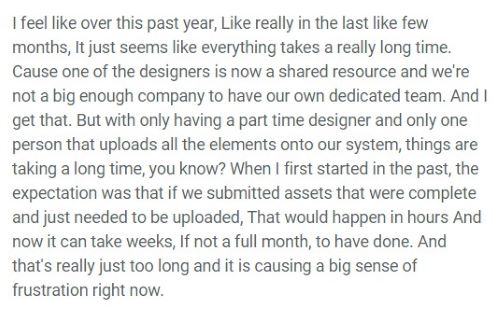
The main story here is that this customer has gone from being satisfied with the service to now experiencing frustration. The outcome of this, if this situation continues, is that this customer is at high risk of churning.
These stories become the basis to brainstorm the right improvements to address the situation raised by the customer.
Because they’re the customer’s actual words, thoughts and feelings, it becomes harder to disregard them.
You can also look at the CSM’s internal notes about the reasons the customer gave as to why they’re leaving.
You may discover there’s a gap between the CSM’s notes and the customer’s view in the exit interview.
The last point about the stories/case studies/new use cases is that by recording the exit interview, you can include portions of the video or audio or text in your presentation to your internal stakeholders and set the stage for powerful discussions.
Post-Interview Step #5
Sharing the Results to Drive Action
By this point, you’re ready to share the results of your interviews with those teams and team members you identified back in Step 1 – The Pre-Interview stage.
Sharing the Results
- Send an email to internal stakeholders informing them of the interesting things you found.
- Meet with internal stakeholders to review feedback and decide on the top actionable items.
- Keep the assigned actions in an accessible place so you can track progress.
- Measure the change in sentiment over time.
- Email internal stakeholders to get updates on progress and provide visibility into the impact of actions. If the customer left because of a feature that’s lacking, reach out to let them know when this feature might be available. (If necessary, hand this off to your sales team to follow up.)
- Reconnect with your customer roughly 90 days after the last date of service. You never know – if they’re working with a competitor, they might not be satisfied and are willing to reconsider becoming your customer again.
- Create a special offer for canceled customers. For example, they could come back within a specific time frame without incurring implementation fees a second time.
What is the most important rule for customer exit interviews?
There are 3 rules that are most important to keep in mind when conducting customer exit interviews:
- The customer is doing you a favour by participating. They have no stake in this. But you do. Respect that they’re giving you their time – time is the one thing they will never get back.
- Dig down into the feelings. All decisions are made on emotions first and then backed up by cognitive processes. It’s not enough to find out why your customer canceled or didn’t renew. It’s not enough to understand their thinking. You want to know how they felt. What impact did that decision have on them? Their team? Their feelings will point out the gaps in their expectation versus the reality they felt as customers. It’s in their feelings that you’ll find the most actionable information to effect better churn management.
- Getting a high participation rate for your exit interviews and for all of your customer feedback means you need a strong customer feedback engagement strategy and system. High participation rates don’t happen in a vacuum – they’re purposefully created and developed.
As much as you can, let your customers know they are valued and that their opinion matters. Show them they are valued and their opinion matters. They will be happy to participate in your surveys and interviews.
Lastly, you should know
Not every customer can be saved.
Not every customer should be saved.
But you should make every effort to understand all the reasons why your customers are leaving.
